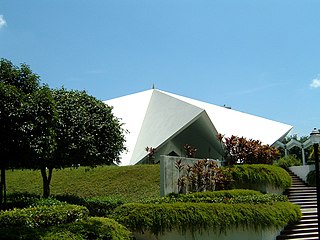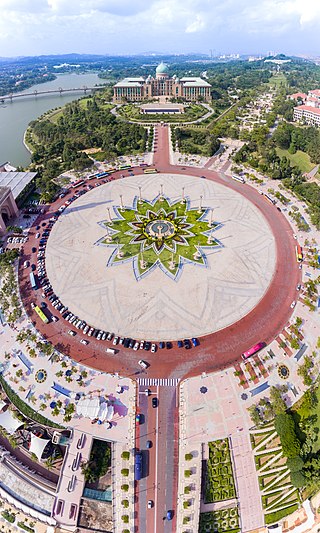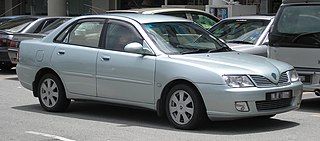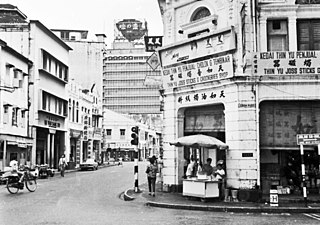
Putrajaya, officially the Federal Territory of Putrajaya, is the administrative centre of Malaysia. The seat of the federal government of Malaysia was moved in 1999 from Kuala Lumpur to Putrajaya because of overcrowding and congestion in Kuala Lumpur, whilst the seat of the judiciary of Malaysia was later moved to Putrajaya in 2003. Kuala Lumpur remains as Malaysia's national capital city per the constitution and is still the seat of the head of state and the national legislature, as well as being the country's commercial and financial centre.

The Sultan Abdul Samad Building is a late-19th century building located along Jalan Raja in front of Dataran Merdeka and the Royal Selangor Club in Kuala Lumpur, Malaysia. The building originally housed the offices of the British colonial administration, and was known simply as Government Offices in its early years. In 1974, it was renamed after Sultan Abdul Samad, the reigning sultan of Selangor at the time when construction began.

Independence Square is a square located in Kuala Lumpur, Malaysia. It is situated in front of the Sultan Abdul Samad Building. It was formerly known as the Selangor Club Padang or simply the Padang and was used as the cricket green of the Selangor Club. It was here that the Union Flag was lowered and the Malaysian flag hoisted for the first time at midnight on 31 August 1957. Since then, the Independence Square has been the usual venue for the annual Independence Day Parade.

The National Mosque of Malaysia is a mosque in Kuala Lumpur, Malaysia. It has a capacity for 15,000 people and is situated among 13 acres (53,000 m2) of gardens. Its key features are a 73-metre-high (240 ft) minaret and a 16-pointed star concrete main roof. The umbrella, synonymous with the tropics, is featured conspicuously – the main roof is reminiscent of an open umbrella, the minaret's cap a folded one. The folded plates of the concrete main roof are a creative solution to achieving the larger spans required in the main gathering hall. Reflecting pools and fountains are spread throughout the compound. Completed in 1965, the mosque is a bold and modern approach in reinforced concrete, symbolic of the aspirations of a then newly independent nation.

The Tugu Negara is a national monument that commemorates those who died in Malaysia's struggle for freedom, principally against the Japanese occupation during World War II and the Malayan Emergency, which lasted from 1948 until 1960. It is located in the Federal capital, Kuala Lumpur. The Malaysian Houses of Parliament is situated near the monument.

The National Principles is the Malaysian declaration of national philosophy instituted by royal proclamation on Merdeka Day, 1970, in reaction to the 13 May race riots, which occurred in 1969. The incident proved at that time that Malaysian racial balance and stability was fragile. Immediately thereafter, the Malaysian government sought ways to foster unity among the various races in Malaysia. Therefore, the National Principles were formed.

The Makam Pahlawan is the burial ground of several Malaysian leaders and politicians. It is located near the Malaysian national mosque, Masjid Negara, in the national capital, Kuala Lumpur. Construction of the mausoleum began in 1963 in conjunction with the construction of Masjid Negara, and was completed in 1965.

The Perdana Putra is a building in Putrajaya, Malaysia which houses the office complex of the Prime Minister of Malaysia. Located on the main hill in Putrajaya, it has become synonymous with the executive branch of the Malaysian federal government.

The Putra Square is a city square in Presint 1, Putrajaya, Malaysia. The square has been used for festivals such as the Malaysian Independence Day parade. The 300 meter circular Putra Square is bounded by Perdana Putra, Putra Mosque, Putra Bridge and the Promenade Shopping Mall.

The Malaysian Houses of Parliament, is a complex where the Malaysian Parliament assembles. The structure is located at the Perdana Botanical Gardens in Kuala Lumpur, close to the Malaysian National Monument.
Syed Jaafar Albar was a Malaysian politician. His staunch defence of his political party, the United Malays National Organisation (UMNO) – which leads the governing Barisan Nasional coalition – led to him being given the moniker "Lion of UMNO". He was also known for his radical views on Malay sovereignty over Malaysia, and Malay supremacy in politics, and is of Hadhrami Arab descent. He was born in Celebes, Dutch East Indies and migrated when he was 14 years old to Singapore.

This article lists important figures and events in Malaysian public affairs during the year 1990, together with births and deaths of notable Malaysians.

This article lists important figures and events in Malaysian public affairs during the year 2000, together with births and deaths of notable Malaysians.

Kuala Lumpur is the largest city in Malaysia; it is also the nation's capital. The history of Kuala Lumpur began in the middle of the 19th century with the rise of the tin mining industry, and boomed in the early 20th century with the development of rubber plantations in Selangor. It became the capital of Selangor, later the Federated Malay States, and then Malayan Union, Malaya and finally Malaysia.
The architecture of Kuala Lumpur is a blend of old colonial influences, Asian traditions, Malay Islamic inspirations, modern and post modern mix. Being a relatively young city, most of Kuala Lumpur's colonial buildings were built toward the end of 19th and early 20th century. These buildings have Mughal, Tudor, Neo-Gothic or Grecian-Spanish style or architecture. Most of the styling have been modified to cater to use local resources and the acclimatized to the local climate, which is hot and humid all year around.

2013 was the 56th anniversary of Malaysia's independence.

Dataran Pahlawan Melaka Megamall is a shopping mall located in Malacca City, Malacca, Malaysia. It was developed and is owned by Hatten Group Sdn Bhd on a 7.7 hectares site in the city, and is the biggest lifestyle shopping megamall in the state. The mall has a gross area of 1,500,000 square feet (140,000 m2) and a net retail area of 750,000 square feet (70,000 m2).

Jamek Mosque, officially Sultan Abdul Samad Jamek Mosque is one of the oldest mosques in Kuala Lumpur, Malaysia. It is located at the confluence of the Klang and Gombak rivers and may be accessed via Jalan Tun Perak. The mosque was designed by British architect and soldier Arthur Benison Hubback, and built in 1909. It was the principal mosque of Kuala Lumpur until the construction of the national mosque Masjid Negara in 1965.
















